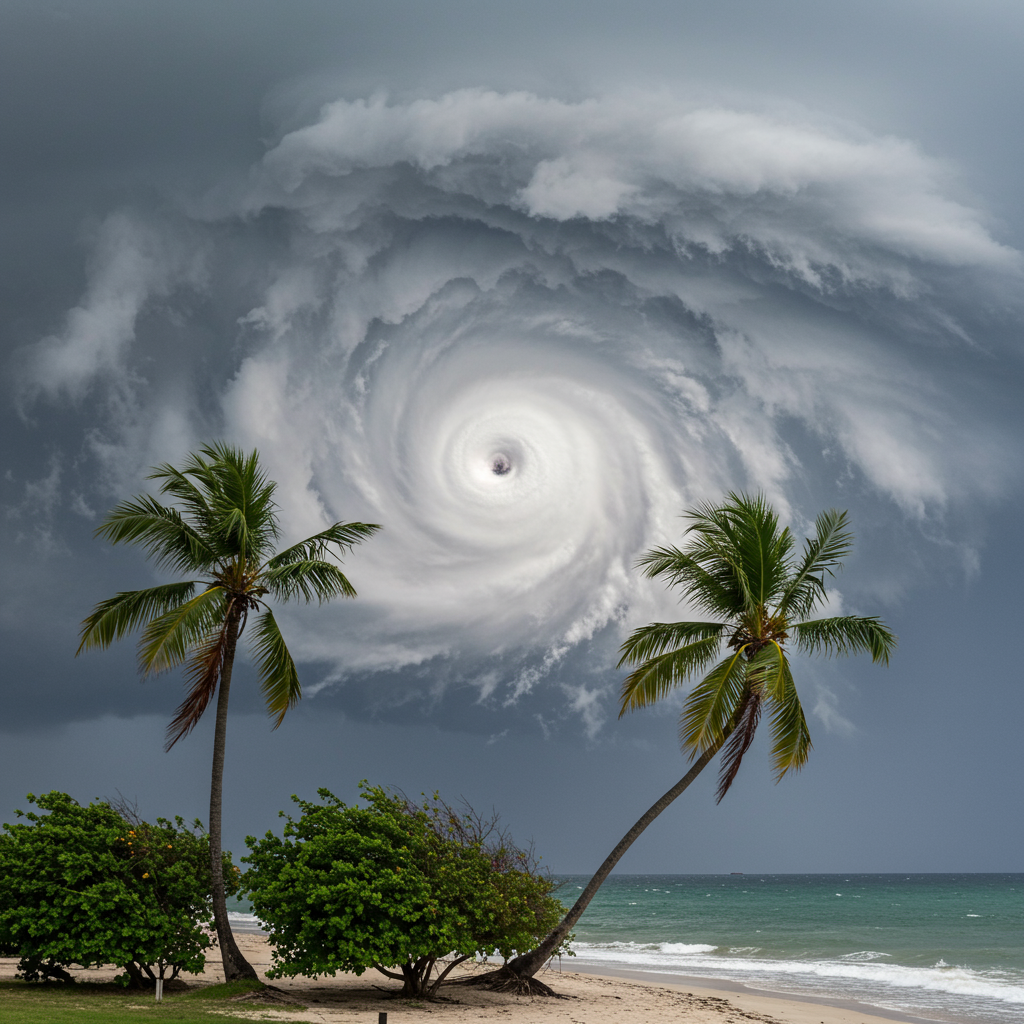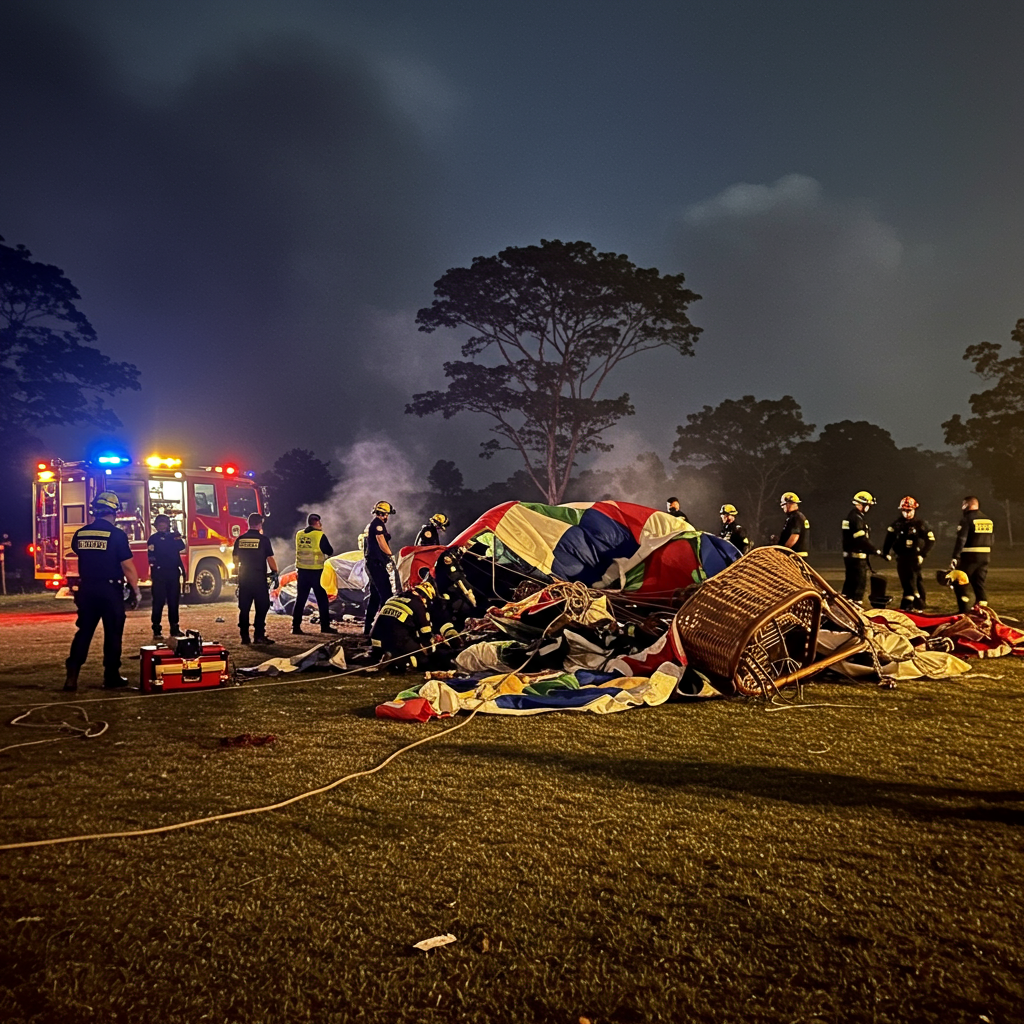The Caribbean faces an unprecedented and dire threat as Tropical Storm Melissa is poised for explosive intensification into a major hurricane. Jamaica, in particular, is bracing for a catastrophic, days-long onslaught of extreme rainfall, devastating winds, and life-threatening storm surge. Forecasters warn of a “slow-motion disaster” that could trigger widespread flooding, destructive landslides, and extensive power outages across vulnerable nations already grappling with Melissa’s initial impacts. Urgent calls for preparedness echo across the region, emphasizing the critical need for immediate action to protect lives and property.
Catastrophe Looms: Hurricane Melissa’s Rapid Intensification
Tropical Storm Melissa, currently churning over some of the warmest ocean waters on the planet, is exhibiting alarming characteristics. As of Friday afternoon, the storm was positioned just over 200 miles southeast of Kingston, Jamaica, with sustained winds around 60 mph. Its perilously slow forward drift of merely 2 mph dramatically elevates the danger, prolonging exposure to its destructive forces. Experts at the National Hurricane Center anticipate Melissa will rapidly intensify into a Category 4 or even a Category 5 hurricane by Sunday. This powerful storm is then expected to hover near or just south of Jamaica, unleashing punishing winds and torrential rain well into early next week.
This explosive strengthening, known as rapid intensification, is becoming more frequent. Climate scientists link this phenomenon to rising global temperatures, fueled by fossil fuel pollution. Melissa joins recent Atlantic hurricanes like Erin, Gabrielle, and Humberto in demonstrating this dangerous trend. Southern Haiti and Jamaica are currently under both tropical storm warnings and hurricane watches. Strong winds are expected to intensify from Friday night through the weekend, setting the stage for a prolonged period of extreme weather.
Melissa’s Extreme Threats: A Trifecta of Destruction
The combination of Melissa’s projected strength and its sluggish pace creates a multifaceted threat, promising widespread devastation across the Western Caribbean.
Unrelenting Rainfall and Catastrophic Flooding
Melissa is predicted to deliver relentless and historic rainfall. Forecasts indicate a foot or more of rain for parts of Jamaica, southern Haiti, and the southern Dominican Republic through early next week. Localized totals could astonishingly reach up to 50 inches in some areas. This unprecedented deluge will lead to widespread flash flooding, turning roads into rivers and rendering communities inaccessible. The already saturated ground from recent heavy rains magnifies the flood threat, making widespread inundation almost inevitable. Haiti’s Civil Protection Agency has already reported at least three deaths due to the storm, with two resulting from a landslide. The National Hurricane Center warned of “extensive damage to roads and buildings” in Haiti, potentially isolating communities for extended periods.
Destructive Winds and Crippling Power Outages
Jamaica, a nation of nearly 3 million people, will endure days of ferocious winds. Tropical storm-force winds are expected by Friday night, escalating to hurricane-force winds over the weekend and persisting into early next week. Sustained winds could reach 120 mph, with gusts potentially exceeding 165 mph in some areas. These extreme wind speeds will devastate homes, businesses, and critical infrastructure. Downed trees, widespread power outages lasting weeks, and structural damage are all highly probable. AccuWeather® meteorologists warn that such winds will cause extensive destruction, severely impacting coastal tourism and prolonging recovery efforts.
Life-Threatening Storm Surge
Coastal areas of Jamaica face the additional peril of a significant storm surge. Predictions suggest a surge of up to 15 feet in some low-lying areas. This immense wall of water will cause extensive inundation, severely damaging ports, beaches, and waterfront properties. Combined with extreme waves, the storm surge poses an immediate life-threatening risk to anyone near the coast, trapping communities and making evacuation impossible.
Why Melissa’s Forecast Is So Alarming: A Unique Danger
Melissa’s forecast is particularly alarming due to three critical, interconnected factors that amplify its destructive potential.
1. Exceptionally Slow Movement: A Prolonged Nightmare
Unlike fast-moving storms, Melissa’s crawling pace means its intense outer bands and core will hover over the same areas for days. This prolonged exposure leads to unimaginable rainfall totals and sustained damaging winds. This scenario draws comparisons to past catastrophic events. Hurricane Harvey in 2017 dumped over four feet of rain on parts of Texas after stalling. Hurricane Dorian in 2019 dropped nearly two feet of rain in the Bahamas and over a foot in parts of South Carolina due to its slow progression. AccuWeather® Lead Hurricane Expert Alex DaSilva branded Melissa a “slow-motion disaster,” warning that parts of Jamaica could experience hurricane conditions for 72 hours or longer.
2. Magnified by Mountainous Terrain: Guaranteed Mudslides
The steep landscapes of Haiti, Jamaica, and the Dominican Republic significantly magnify the flood threat. As Melissa’s moisture-laden air is forced upward by the mountains, it will wring out even more precipitation, much like squeezing a wet sponge. This process transforms tropical humidity into torrents of water racing downhill. Mudslides are “all but guaranteed” in this scenario, a devastating consequence observed during Hurricane Helene in western North Carolina. This terrain exacerbates the risk of flash flooding and complicates rescue efforts.
3. Deep, Warm Caribbean Waters: Fueling a Monster
The Caribbean Sea boasts exceptionally warm water that extends far below the surface. This deep reservoir of heat prevents the typical “stirring up” of cooler water, which can naturally weaken hurricanes. Instead, Melissa is expected to “feast” on this abundant warmth, enabling its rapid intensification and raising the ceiling on its potential intensity. This continuous fuel source allows the storm to maintain or even increase its strength over an extended period.
Urgent Preparations Underway Across Affected Nations
Officials across the Caribbean are urging residents to take immediate precautions. Emergency measures are being implemented to minimize casualties and facilitate response efforts.
Jamaica’s Comprehensive Response
In Jamaica, preparations are in full swing. Minister of Health and Wellness, Christopher Tufton, confirmed that all public hospitals shifted into “emergency mode” on Thursday evening. This designation suspends outpatient and elective procedures, ensuring more beds are available for storm-related emergencies. Schools, health centers, and government offices have closed, and airports are expected to shut down within 24 hours of a hurricane warning for the country. Residents like Marcus Thompson in Kingston are covering windows and stocking food, while others like Alton Williams in Mandeville moved cars to higher ground.
Haiti’s Compounded Vulnerabilities
Haiti, already struggling with existing vulnerabilities like erosion, poverty, and gang violence, faces a particularly dire situation. The United Nations is preparing over 100 emergency shelters in Haiti’s southern region. Tragically, the country has already reported at least three storm-related deaths, including an elderly man killed by a falling tree and two from landslides. Thousands living in makeshift shelters in Port-au-Prince, displaced by gang violence, are now confronting a dual crisis.
Dominican Republic’s Early Impacts
The Dominican Republic has already experienced significant impacts from Melissa. Nearly 200 homes were damaged, and water supply systems for over half a million customers were disrupted. Downed trees, toppled traffic lights, and small landslides were reported. Public schools and government offices in 12 alert provinces were closed. Mandatory evacuations are in effect for high-risk zones, with President Luis Abinader stressing, “The main thing here is to save lives. The risk is the enormous amount of rain.”
Beyond the Initial Impact: Broader Regional Concerns
While Jamaica, Haiti, and the Dominican Republic brace for the most severe impacts, Melissa’s path extends beyond these initial countries. After passing Jamaica, eastern Cuba is likely the next country in the storm’s trajectory, facing destructive winds and flooding rain by midweek. The Bahamas and Turks and Caicos could also experience significant impacts later in the week.
The United States mainland, while unlikely to face a direct hit, is not entirely out of the woods. Rough surf and dangerous rip currents are anticipated along the US East Coast next week. The scale of destruction and the prolonged nature of Melissa’s impact raise significant concerns for a severe humanitarian crisis. Thousands may be left without access to food, shelter, or medical care, with a high threat of disease outbreaks. Recovery in the hardest-hit areas is projected to take years, necessitating substantial international financial and logistical assistance for rebuilding infrastructure and restoring essential services.
Frequently Asked Questions
What makes Hurricane Melissa’s forecast so uniquely dangerous for the Caribbean?
Hurricane Melissa presents a unique and severe danger due to three critical factors: its exceptionally slow movement, which prolongs exposure to extreme conditions; its interaction with the mountainous terrain of affected islands, which dramatically increases rainfall and mudslide risks; and its ability to rapidly intensify over the Caribbean’s deep, warm ocean waters, fueling it to a potentially catastrophic Category 4 or 5 status. These combined elements contribute to predictions of historic rainfall, devastating winds, and a prolonged “slow-motion disaster” for the region.
Which Caribbean nations are most severely impacted by Hurricane Melissa, and what are the immediate warnings?
Jamaica and southern Haiti are expected to bear the brunt of Hurricane Melissa’s wrath, with the Dominican Republic also experiencing significant early impacts and eastern Cuba next in the storm’s potential path. Both southern Haiti and Jamaica are under tropical storm warnings and hurricane watches. Officials are urging residents in Melissa’s path to prepare for life-threatening flooding, landslides, power outages, and dangerous seas. Mandatory evacuations are in effect for high-risk areas, and essential services like hospitals are in “emergency mode” to prepare for casualties.
What essential preparations should residents and travelers make as Hurricane Melissa approaches?
Residents in affected areas must prioritize safety. This includes securing homes by boarding up windows, moving vehicles to higher ground, and preparing for days without electricity, clean water, or communication. Evacuating high-risk coastal or low-lying areas when advised by authorities is paramount. Travelers should anticipate widespread flight cancellations and airport closures across Jamaica, Haiti, and Cuba. It is crucial to monitor official hurricane center updates and local government advisories minute-by-minute, having an emergency kit with food, water, medical supplies, and important documents readily accessible.
Conclusion: A Call for Vigilance and Resilience
Hurricane Melissa represents a potentially historic and catastrophic event for the Western Caribbean. Its unique combination of rapid intensification, extreme winds, prodigious rainfall, dangerous storm surge, and critically, its sluggish forward speed, will expose millions to days of devastating conditions. The full scale of the humanitarian and infrastructural crisis is expected to unfold as the storm progresses, demanding immediate local action and crucial, sustained international support for the extensive recovery anticipated in the years to come. Residents across the affected region must heed official warnings, take immediate preparedness steps, and demonstrate profound resilience in the face of this unparalleled natural disaster.




